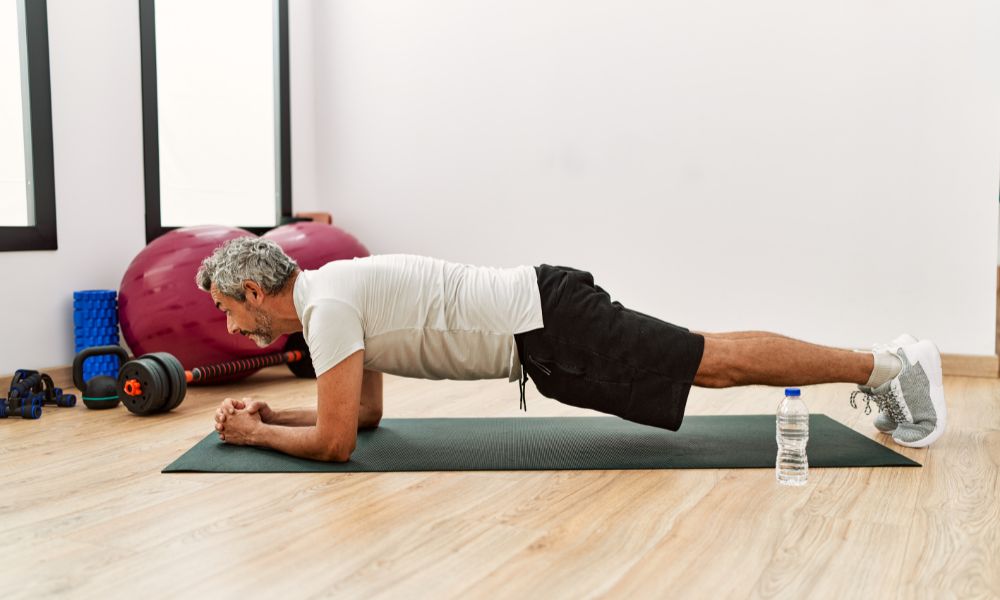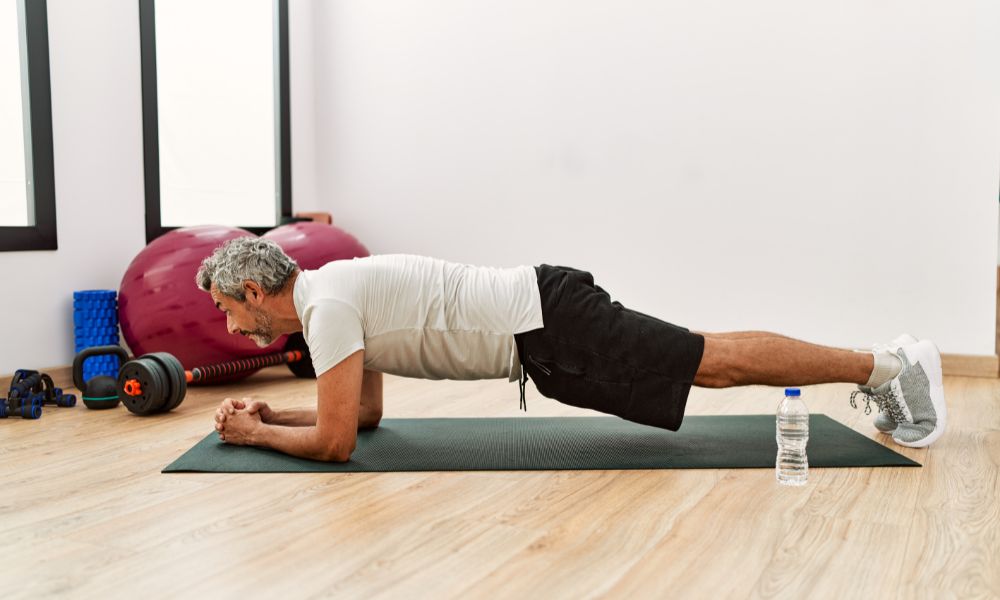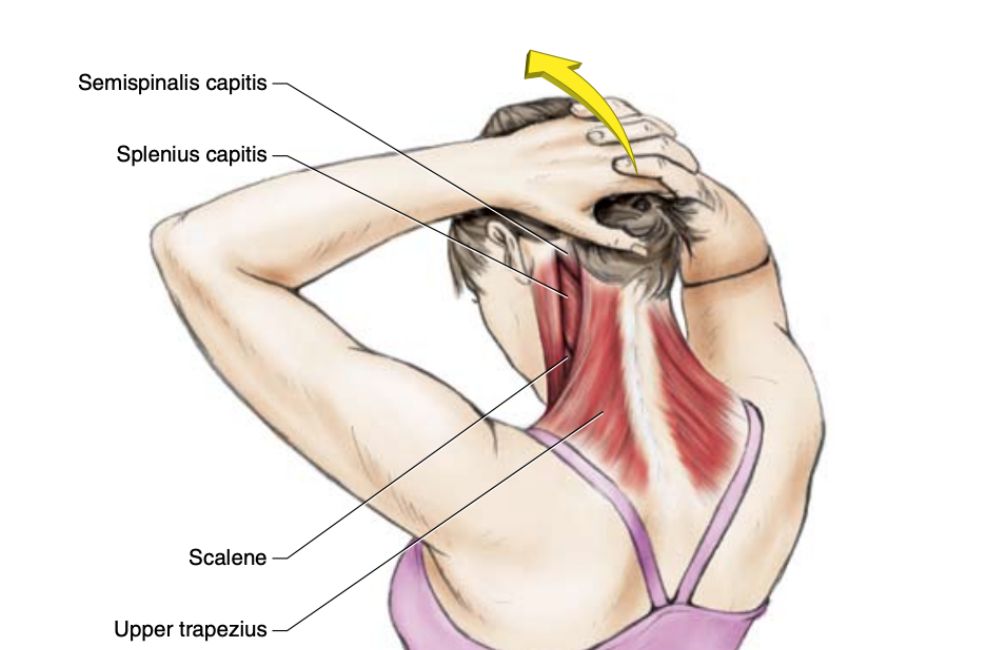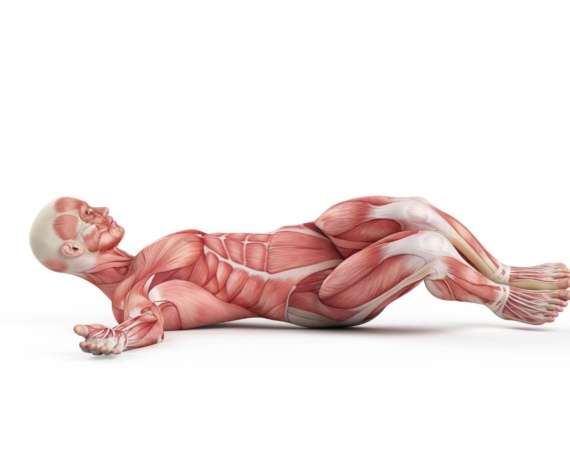
As we age, it becomes increasingly important to prioritize core strength and stability. A strong core not only enhances our posture and balance but also supports overall functional movement and prevents the risk of injuries.
If you’re over 40 and looking to strengthen your core, we’ve curated a list of the seven best exercises to help you achieve just that. Incorporate these exercises into your fitness routine and feel the benefits of a strong and resilient core.
Plank

The plank is a classic exercise that engages multiple core muscles. Start by assuming a push-up position with your hands directly under your shoulders and your toes tucked under. Maintain a straight line from your head to your heels, engaging your abs and glutes. Hold this position for as long as possible, gradually increasing your time over the weeks. For variation, try side planks or plank with leg lifts to challenge different muscle groups.
Dead Bug
The Dead Bug exercise targets deep core muscles while minimizing strain on the lower back. Lie on your back with your arms extended towards the ceiling and your knees bent at a 90-degree angle. Slowly lower your right arm and left leg towards the ground while keeping your core engaged and your lower back pressed against the floor. Return to the starting position and repeat on the opposite side. Perform 3 sets of 10-12 repetitions.
Bird Dog
The Bird Dog exercise improves core stability and balance. Begin on all fours with your hands directly under your shoulders and your knees under your hips. Extend your right arm forward while simultaneously extending your left leg backward, maintaining a straight line from your fingertips to your toes. Hold for a few seconds, then return to the starting position and switch sides. Aim for 3 sets of 10-12 repetitions on each side.
Standing Pallof Press
The Standing Pallof Press targets the deep core muscles responsible for stabilizing your spine. Stand with your feet shoulder-width apart and hold a resistance band or cable handle in front of your chest. Push the band straight out, extending your arms fully, and then slowly bring it back towards your chest. Maintain a strong core and resist any rotation or movement of the torso. Aim for 3 sets of 10-12 repetitions on each side.
Bridge
The Bridge exercise activates the glutes, lower back, and core muscles. Lie on your back with your knees bent and feet flat on the ground, hip-width apart. Engage your glutes and lift your hips off the ground, creating a straight line from your knees to your shoulders. Hold the position for a few seconds, then slowly lower your hips back down. Perform 3 sets of 10-12 repetitions, focusing on proper form and engaging your core throughout.
Russian Twist
The Russian Twist is an effective exercise for strengthening the oblique muscles and improving rotational stability. Sit on the floor with your knees bent and your feet lifted slightly off the ground. Lean back slightly, engage your core, and twist your torso to the right, touching the ground beside your hip with both hands. Return to the center and repeat on the opposite side. Aim for 3 sets of 12-15 repetitions on each side.
Pilates Exercises
Consider incorporating Pilates into your core-strengthening routine. Pilates exercises, such as the Hundred, Roll-Up, and Scissors, focus on core engagement, flexibility, and overall body control. Join a Pilates class or follow instructional videos to ensure proper technique and guidance.
The Takeaway
Remember to listen to your body and progress at your own pace. Start with variations and repetitions that challenge you without causing pain or discomfort. Consistency is key, so aim to perform these exercises at least 2-3 times per week, allowing your muscles time to recover between sessions.
By incorporating these core-strengthening exercises into your fitness regimen, you’ll enhance your overall strength, stability, and functional movement, leading to improved posture, balance, and reduced risk of injuries. Take care of your core, and enjoy the benefits of a strong and resilient body as you navigate life after 40.


